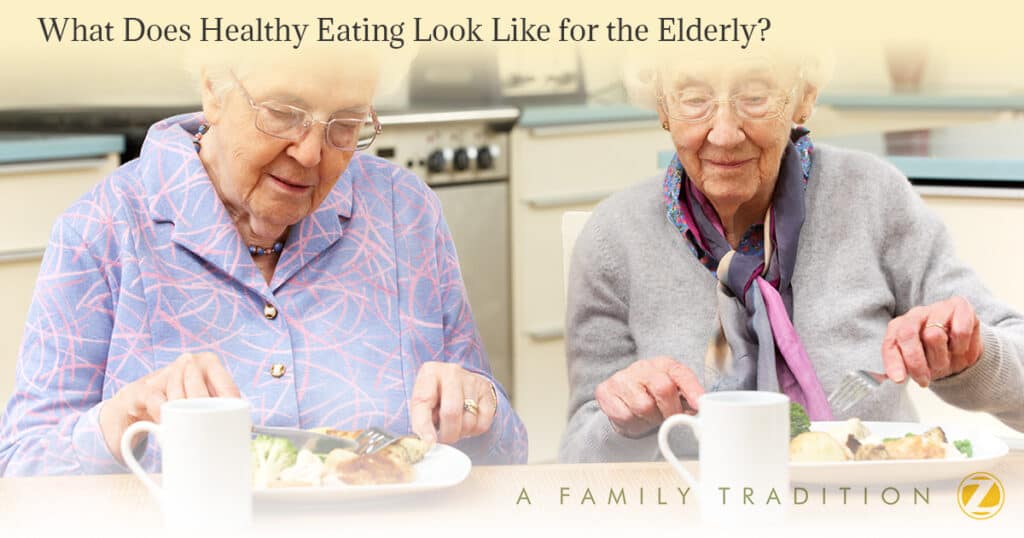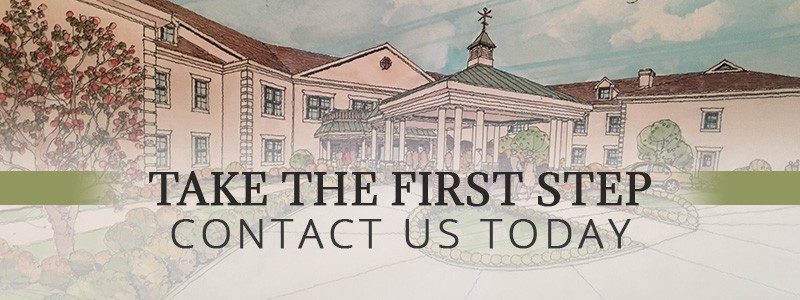
Eating is a social activity that plays an extremely important role in your health. As you get older, your eating habits will need to change. Your appetite will probably change anyway; it’s common for the appetite to decrease as we get older. It can also become more difficult to purchase and prepare healthy foods, which leads many elderly people to eat exclusively from the frozen dinner aisle. Unfortunately, microwave meals don’t have the correct nutrients, which has led to many malnourished elderly people.
As an elderly person, you need to view every meal or snack as an opportunity to help your body function better. Believe it or not, eating well can relieve many common discomforts. At The Heritage, we maximize every meal for nutrition and enjoyability, doing everything we can to ensure our kitchen produces delicious, healthy meals for our community members.

What Does Healthy Eating Look Like for the Elderly?
In today’s blog, we’re going to explore some of the important considerations we make when it comes to nourishing our diners.
Maximizing Hydration
- Water not only hydrates the body, it supports digestion and blood volume. The elderly tend to not drink enough water because they don’t feel thirsty as often as they used to. Though water is best, aim to drink some type of fluid at least six times a day. Milk and juices are always available during meals, and we always will make sure you have water available to you.
Minimizing Salt
- We all need some salt, but consume too much, and you’ll have an increased risk of heart disease and high blood pressure. Unfortunately, a majority of food manufacturers add a bunch of salt to their foods, even though salt already occurs naturally. This is especially true when it comes to the frozen dinners that are so easy to prepare. Search for low-sodium foods and avoid salty snacks, corned beef, bacon, ham, and cold cuts. Lastly, try to flavor your food with spices rather than salt.

Being Careful About Alcohol
- Unfortunately, alcohol doesn’t offer any essential nutrients. That doesn’t mean you can’t have it, but, as always, moderation is key. If you are healthy, you should not have more than two standard drinks per day.
Limiting Trans Fat and Saturated Fats
- These types of fats are delicious, but once they get past your mouth, the story is much different. Your body struggles to process the fats in a healthy way and they can end up doing a lot of harm. This doesn’t mean you can’t enjoy dessert, but steer clear of pastries, pies, and fried foods. Desserts can be delicious and nutritious, especially when they’re crafted by our team. We always offer fresh season fruit if you have a sweet tooth.
Consuming the Right Minerals and Vitamins
- Many elderly people struggle with at least one deficiency due to medication, illness, or decreased appetite. Additionally, supplements can be expensive and fail to fit into your budget. The good news is, you can get a lot of important vitamins and minerals from the food you eat, and our menu is designed to give you what you need.
Live Your Best Life at The Heritage
We’ve all probably heard the phrase “You are what you eat,” and it’s actually true. A majority of your body’s cells are replaced every seven to 10 years, and your body uses the food you eat as building blocks. Just because you’re getting on in years doesn’t mean your body cannot improve. When you join The Heritage community, your mind, body, and spirit are all tended to. Learn more about our senior living apartments in Hammonton with a tour today!
